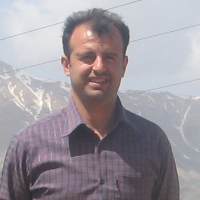Evaluating a proposed quantitative method to record plants phenological stages in comparison with other approaches for Olive species (Olea europaea L.)
Author(s):
Abstract:
Phenology describes the phenomena that happen periodically in the life of living creatures. The differences between the appearance of this phenomena result in phenology behavioral patterns. The phonological studies are important for many applications such as typology in silviculture, afforestation, natural regeneration, livestock grazing planning, and species selection for park designing and decorating. Detecting changes in phenology of plant species receives more attention due to undergoing current climate changes studies. According to the literature, there are two main methods for registering phonological events including descriptive and remote sensing approaches. In this paper the advantages and disadvantages of these methods are discussed, and a new quantitative method based on the leaves and fruits colours changes is proposed. A case study on Olea europaea L. was used to describe the quantitative methods. In the proposed quantitative method, imaging of the plant parts (Leaf and fruit) was done in every other week intervals. Using smudge tools in Photoshop software, the colour of each part of the plant were uniformed and their RGB digits were assessed. Then the percentage of each colour channels was determined and their diagrams of changes during the time were analyzed. This method results in an exact determination of the plant transformation. The studied method analyzes image series of plant parts to detect color changes; hence, it provides a base to study of phenological changes in a quantitative manner. By detecting the RGB digital number, it is easy to report the exact color and it provides a comparable bases. Descriptive method is the most common way for phenology studies. In this method, viewpoints of the observer extremely affect the result and may cause misreporting during an observation or recording. The remote sensing method is more appropriate to be used in large scales environmental condition monitoring programs and also for vegetation responses to universal continental changes. This method is not suitable for small scales studies. The RGB based reporting system can be useful in other field of studies such as pedology, geology, horticulture and so on.
Language:
Persian
Published:
Iranian Journal of Forest and Poplar Research, Volume:19 Issue: 4, 2012
Page:
597
https://magiran.com/p990948
دانلود و مطالعه متن این مقاله با یکی از روشهای زیر امکان پذیر است:
اشتراک شخصی
با عضویت و پرداخت آنلاین حق اشتراک یکساله به مبلغ 1,390,000ريال میتوانید 70 عنوان مطلب دانلود کنید!
اشتراک سازمانی
به کتابخانه دانشگاه یا محل کار خود پیشنهاد کنید تا اشتراک سازمانی این پایگاه را برای دسترسی نامحدود همه کاربران به متن مطالب تهیه نمایند!
توجه!
- حق عضویت دریافتی صرف حمایت از نشریات عضو و نگهداری، تکمیل و توسعه مگیران میشود.
- پرداخت حق اشتراک و دانلود مقالات اجازه بازنشر آن در سایر رسانههای چاپی و دیجیتال را به کاربر نمیدهد.
In order to view content subscription is required
Personal subscription
Subscribe magiran.com for 70 € euros via PayPal and download 70 articles during a year.
Organization subscription
Please contact us to subscribe your university or library for unlimited access!




